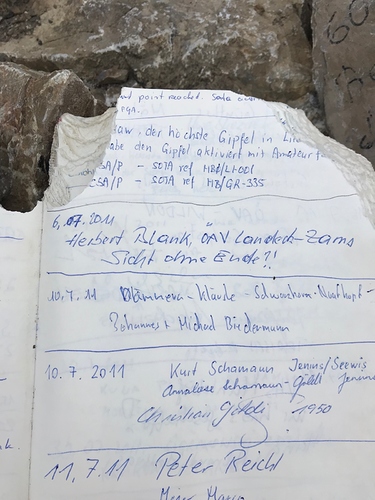I’m documenting this summit here mainly in order to link to this post from the summit info page, as the extent of the activation zone (and whether the tower needs to be climbed) is not clear even on a high resolution map.
Gulderturm as seen from Gulderstock
For the June 1, 2018 revision of the HB summit list, I analyzed a DEM (Digital Elevation Model) of Switzerland with a software tool, and used a script to compare the results with the previous list to find any discrepancies or new summits. One such discrepancy was Gulderstock HB/GL-019 2511 m, which didn’t appear to be the highest point. The latest Swisstopo map revealed that Gulderturm, a tower next to Gulderstock, was 8 meters higher, but as the tower didn’t have an elevation label in earlier map versions, Gulderstock had been chosen as the SOTA summit. This has now been corrected as of June 1, and since Gulderstock has never been activated anyway, the reference has remained the same.
It is therefore my own fault that the way to HB/GL-019, which would only have been a medium-difficulty hike (to Gulderstock) before, turned into an additional short rock climb to Gulderturm ![]()
As I was hiking towards the summit, I met two girls who were just marking the route to Gulderstock with white-blue-white paint (i.e. an alpine hiking trail). This freshly marked route, which I would estimate to have a difficulty of T4 on the SAC hiking scale, passes underneath Gulderturm on the south-eastern side, and leads to a relatively flat spot just below the tower (46.99295, 9.20053). According to my measurements, this spot is at 2501 m and still within the activation zone. This is where I put up my antenna, as I didn’t know whether it would be convenient on the summit, and preferred to climb without a heavy backpack anyway.
This was an AlexLoop activation with the usual weak signals to frustrate chasers – something I avoid doing these days, but as it wasn’t clear beforehand whether I would need to activate on the tower and how much space there would be, I decided to take the AlexLoop this time.
The “col” between Gulderturm and Gulderstock is at about 2491 m (46.99317, 9.20099), which means that the summit of Gulderstock is not within the activation zone.
To me, no activation is complete without having visited the actual summit. So I climbed into the gap between the Gulderturm and its little cousin, the “Guldertürmli”, traversed on the north side around the tower and approached the summit through the south face (approximate route in photo from memory). UIAA grade II; in some places the rock is brittle.
On the backside of the towerAt the summit, I found a cairn with a summit book from 1987. There were five entries from 2017, and none for this year yet, showing that this summit is not visited very frequently.
Before the descent, I calibrated the barometric pressure sensor in my iPhone to 2519 m at the summit. The Bosch BMP280 sensor has a relative accuracy of ±1 m, making it possible to check the extent of an activation zone more accurately than with maps or GPS.
vy 73,
Manuel HB9DQM
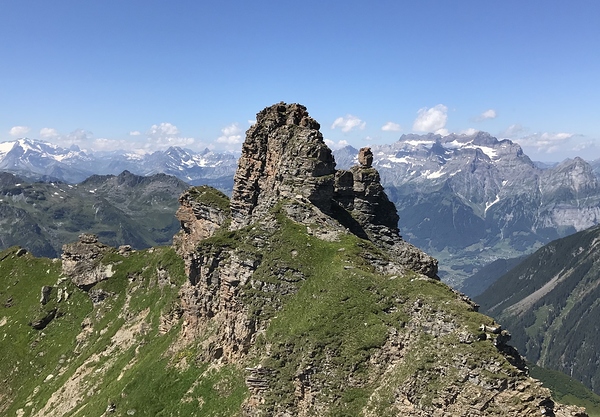
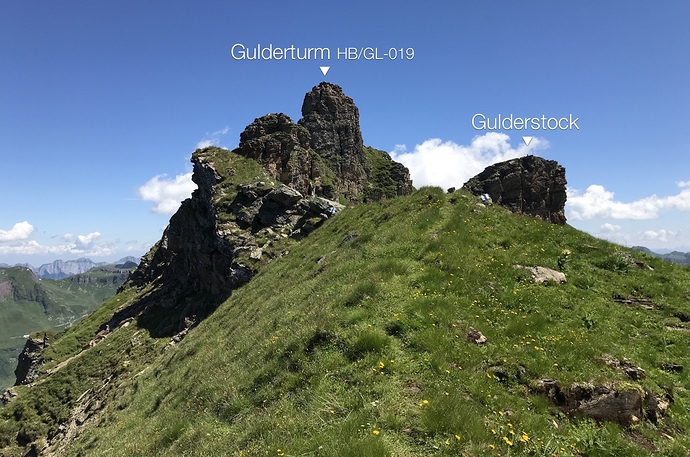
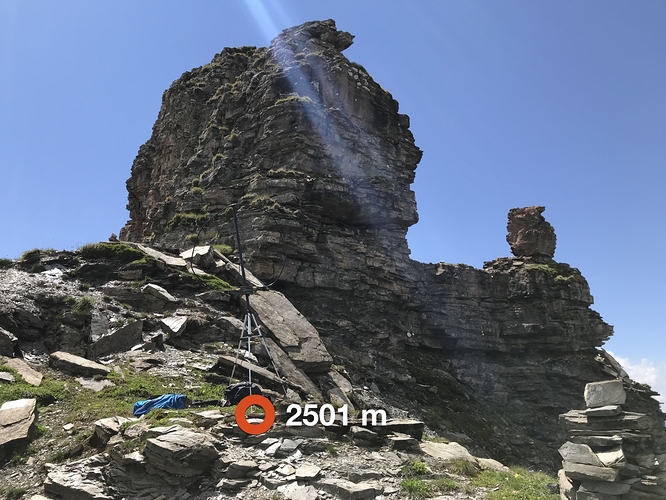
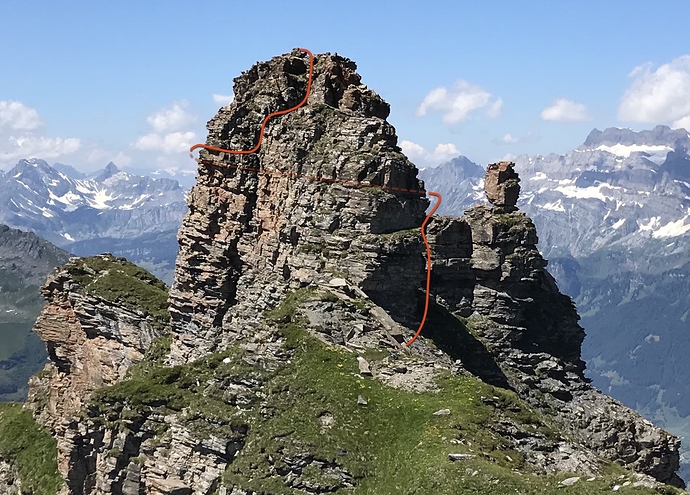
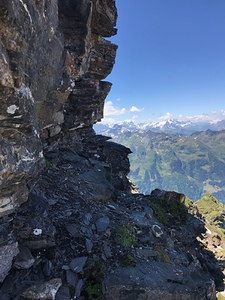
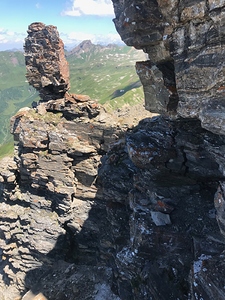
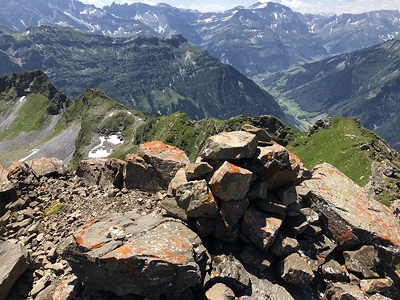

 Mni tnx fer info!
Mni tnx fer info! But I think that a better, more accurate position of the summit will be accepted, this seen from the spirit of the programme.
But I think that a better, more accurate position of the summit will be accepted, this seen from the spirit of the programme.
